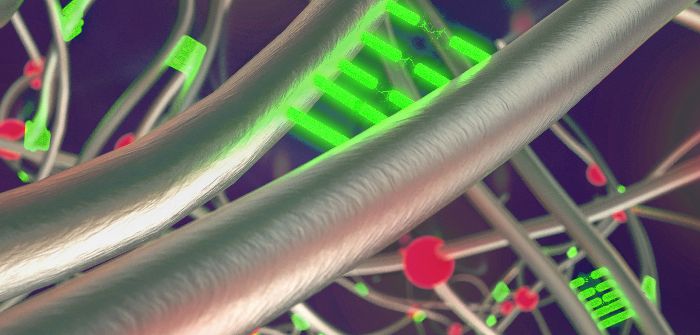Researchers from the Harvard John A. Paulson School of Engineering and Applied Sciences (SEAS) at Harvard University have developed a new type of rubber that is said to be as tough as natural rubber but can also self-heal.
Engineering self-healing properties in dry materials such as rubber have proved challenging. In order to overcome these challenges, the team needed to make the bonds connecting the polymers reversible, so that they can be broken and reform.
“Previous research used reversible hydrogen bonds to connect polymers to form a rubber but reversible bonds are intrinsically weaker than covalent bonds,” said Li-Heng Cai, a postdoctoral fellow at SEAS (within of Harvard University’s Faculty of Arts and Sciences), and corresponding author of the paper. “This raised the question, can we make something tough but that can still self-heal?”
Cai, along with Jinrong Wu, a visiting professor from Sichuan University, China, and senior author David A Weitz, Mallinckrodt Professor of Physics and Applied Physics, developed a hybrid rubber with both covalent and reversible bonds.
The concept of mixing both covalent and reversible bonds to make a tough, self-healing rubber was proposed in theory by Cai but never shown experimentally because covalent and reversible bonds don’t like to mix. “These two types of bonds are intrinsically immiscible, like oil and water,” Cai said.
Researchers developed a molecular rope to tie these two types of bonds together. This rope of randomly branched polymers enables two previously unmixable bonds to be mixed homogeneously on a molecular scale. In doing so, they were able to create a transparent, tough, self-healing rubber.
When stretched, hybrid rubber develops so-called crazes throughout the material, a feature similar to cracks but connected by fibrous strands. These crazes redistribute the stress, so there is no localized point of stress that can cause catastrophic failure. When the stress is released, the material snaps back to its original form and the crazes heal.
A patent application has been filed for the technology and the office is now actively seeking commercialization opportunities.
Said Weitz. “For materials science, it is not fully understood why this hybrid rubber exhibits crazes when stretched. For engineering, the applications of the hybrid rubber that take advantage of its exceptional combination of optical transparency, toughness, and self-healing ability remain to be explored.
“Furthermore, the concept of using molecular design to mix covalent and reversible bonds to create a homogenous hybrid elastomer is quite general and should enable development of tough, self-healing polymers of practical usage.”
August 23, 2017



